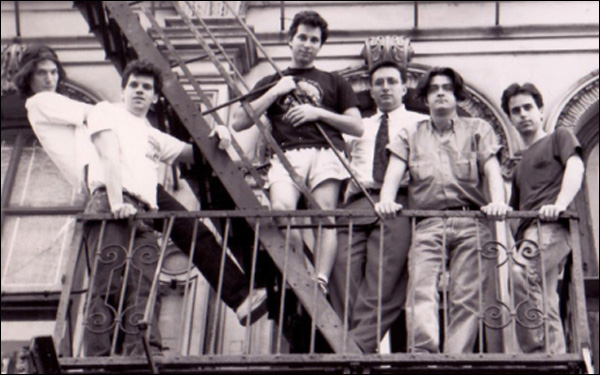While it only seems natural for film to be the best medium on which film history should be recounted, when it is, it’s often comprised of the same smoke and mirrors as the films that are discussed, especially when that history doesn’t have a Hollywood ending. Then again, The Shooting Gallery wasn’t a product of Hollywood, but of the wild heyday of indie film in the 1990s when a collective of SUNY Purchase grads could become major players as a successful producer of the likes of “Sling Blade” and Kenneth Lonergan’s “You Can Count on Me” and ultimately a groundbreaking distributor of films such as the Clive Owen breakthrough “Croupier” and Laurent Cantet’s “Human Resources” before wiping out amidst the dot-com boom and bust at the turn of the century.
As a result, “Misfire: The Rise and Fall of The Shooting Gallery,” which is currently raising funds on Kickstarter before a November 1st deadline, promises to be no ordinary documentary, a warts-and-all look at the company’s short but never dull history told from the perspective of many of those most intimately involved with it. While the company’s famously outspoken former CEO Larry Meistrich declined to be involved with the project, it boasts a production team comprised of the same people that were the backbone of the Shooting Gallery through its 10-year run. Co-founder Whitney Ransick is helming the project and with fellow founder Bob Gosse, the film has lined up interviews with veterans of Shooting Gallery productions such as Robin Tunney and Edie Falco, not to mention their contemporaries in the field such as current San Francisco Film Society chief Ted Hope, Focus Features head James Schamus and Killer Films’ Christine Vachon, whose participation could portend that beyond recounting the history of The Shooting Gallery, this will be one of the first truly comprehensive overviews of that transformative era in American cinema.
“What struck us as we were making ‘Misfire’ was how the story of The Shooting Gallery weaved through that time in indie film so succinctly,” said Ransick, who is currently in post-production on the film. “For example, when ‘no-budget films’ like ‘El Mariachi’ were all the talk in the media, The Shooting Gallery did Nick Gomez’ ‘Laws of Gravity’ for $38,000. When purchase prices for indie films started to explode, The Shooting Gallery sold Billy Bob Thornton’s ‘Sling Blade.’ Bob Gosse summed it up best by saying the story of indie film at that time is our frame, while the story of The Shooting Gallery is the lens.”
In fact, it was only when enough time had passed to provide 20/20 optimization that Ransick, decided to approach Larry Russo, one of the original backers of the company, after reading a line from Peter Biskind’s 2004 tome “Down and Dirty Pictures” that recognized The Shooting Gallery as one of “three New York-based companies comprised of producers who were dedicated to director-driven films.” Although numerous pages in Biskind’s book were devoted to the other two – Hope and Schamus’ Good Machine and Vachon’s Killer Films – only the success of “Sling Blade,” which sold to Miramax for an eye-popping $10 million and subsequently financed the growth of the company, warranted a mention over the next 375 pages and Ransick knew there was substantially more to the story, though just how much he couldn’t possibly know given his departure from the company in 1994 after the production of his feature debut “Hand Gun” to establish a solid career for himself in television.
Just like the old days, Russo came aboard the project with some seed money as well as fellow co-founder Gosse, who was with the company from when it first had an office in lower Manhattan with parties to pay the electric bills in 1991 to when the lights were turned off for good in 2001. With Gosse’s guidance, the film will cover everything from the Shooting Gallery’s beginnings as a resourceful group of creative collaborators who made a splash with the gritty drama “Laws of Gravity” and created a haven for fellow artists with the popular post-production house Gun for Hire who would grow beyond their means and into areas, such as e-commerce, where it did not belong.
These days, Ransick and Gosse could use a place such as Gun for Hire since it is their mounting costs for elements such as color correction, audio mixing and After Effects that has led them to crowdsourcing. Should their campaign be successful, the film will likely start making the festival circuit rounds in 2013, but without it, this insider’s look at one of the most interesting stories of recent cinema history is looking at a rough road ahead.
“What is special about our film is that it tells the story from the perspective of the people that were, some from the beginning to the end,” Ransick said. “The bottom line is that while The Shooting Gallery will always be remembered for what happened in the second half, numerous good films were made there and many careers launched.”
Even a decade after its death, it appears The Shooting Gallery has one more good film left in it.
To back this project and watch a personal pitch video for “Misfire,” check out the film’s Kickstarter page here. And follow the film’s progress on Twitter, YouTube, Facebook and its official site.




